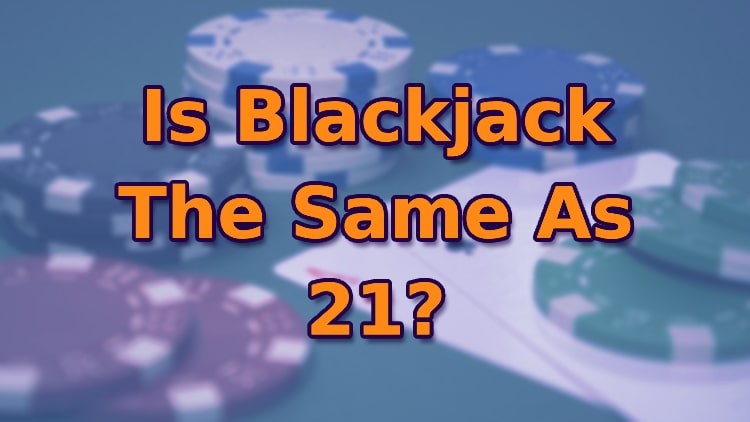
Blackjack, a globally renowned game, has gained immense popularity in the casino world since its inception in the 1700s. With its house edge being as low as 0.5% when basic strategy is effectively implemented, it's not surprising that this game has a large fan base.
However, you might have come across the term '21' in the casino floors or online platforms and wondered if it's the same as Blackjack. In this comprehensive guide, we delve into the similarities and differences between Blackjack and 21 to clear up any confusion you might have.
Are Blackjack & 21 The Same?
In essence, Blackjack and 21 can be considered the same game. The term '21' began to be associated with Blackjack as far back as the 1700s. Interestingly, this association started in France, where players referred to the game as 'vingt-et-un', meaning 21 in French. Hence, when people refer to 21, they could be talking about Blackjack or the game Spanish 21, which leads to the usual confusion.
The origins of the game are still uncertain, with some attributing it to France while others claim that Spain was the birthplace of Blackjack. Regardless of its origins, the game's popularity grew rapidly, drawing audiences from all parts of the world.
What Is The Difference Between 21 And Blackjack?
While Blackjack and 21 might be the same game at its core, there are some notable differences that you should be aware of:
- Number of Decks Used: Spanish 21 utilises a 48-card deck, whereas French Blackjack, also known as single-deck Blackjack, uses a 52-card deck.
- Missing 10's: A unique attribute of Spanish 21 is the absence of the number 10 cards from the deck.
- Side Bets: Classic Blackjack typically does not allow side bets. On the contrary, 21 permits a wide range of side bets, including insurance, which pays out in the same ratios.
- Hitting 21: In Spanish 21, if both the player and the dealer hit 21, the player wins. However, in French Blackjack, there is no payout if both the dealer and the player hit 21.
Why Are Blackjack & 21 Considered Different Games?
The main reason why many people don't consider Blackjack and 21 as the same game is because 21 can also refer to Spanish 21. Since most players associate Blackjack with French origins, they may believe that Spanish 21 is a different game or a variation of Blackjack that originated from Spain.
How Do You Play Spanish 21?
While Spanish 21 and French Blackjack might be the same game at their core, Spanish 21 incorporates a different play system. Let's delve into some key rules of the game:
- Late Surrender: Spanish 21 permits late surrender. If the dealer doesn't hit Blackjack, the player can surrender and receive half their bet back before exiting the game.
- Double after Split: If players have 2 matching value cards, they can split them into separate hands. A double bet afterwards is permitted.
- Re-splitting Aces: Spanish 21 allows re-splitting aces. Splits in up to 4 hands are possible.
- Player 21 Always Wins: A player 21 win is possible even though your cards match the dealer's.
- Double on Any Number of Cards: The player can do this on their turn.
- Hit and Double Down: Players can hit and double down after aces split.
- Surrender after Doubling: A 'double down rescue' is possible in Spanish 21. The player can forfeit an amount equal to an original bet after a double.
Conclusion
To summarise, Blackjack and 21 are essentially the same game, but with some slight variations that are noteworthy. We hope this guide has provided you with a clear distinction between the two games. If you choose to play either, be sure to familiarise yourself with the specific rules of that game before playing so you know what to expect.
Remember, as with all forms of gambling, it's important to play responsibly. Be sure to set limits for yourself, and never gamble more than you can afford to lose.
*All values (Bet Levels, Maximum Wins, etc.) mentioned in relation to this game are subject to change at any time. Game features mentioned may not be available in some jurisdictions.
